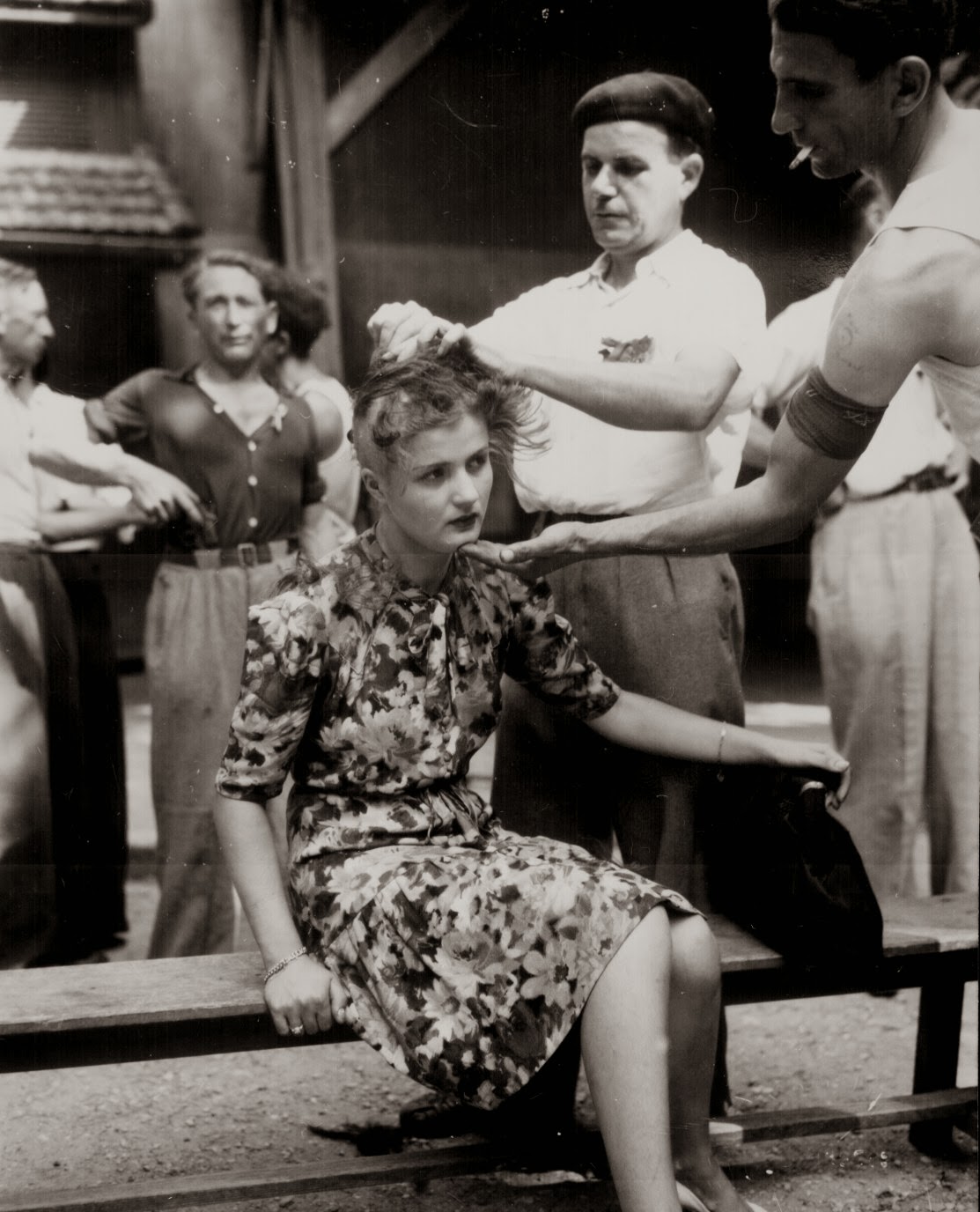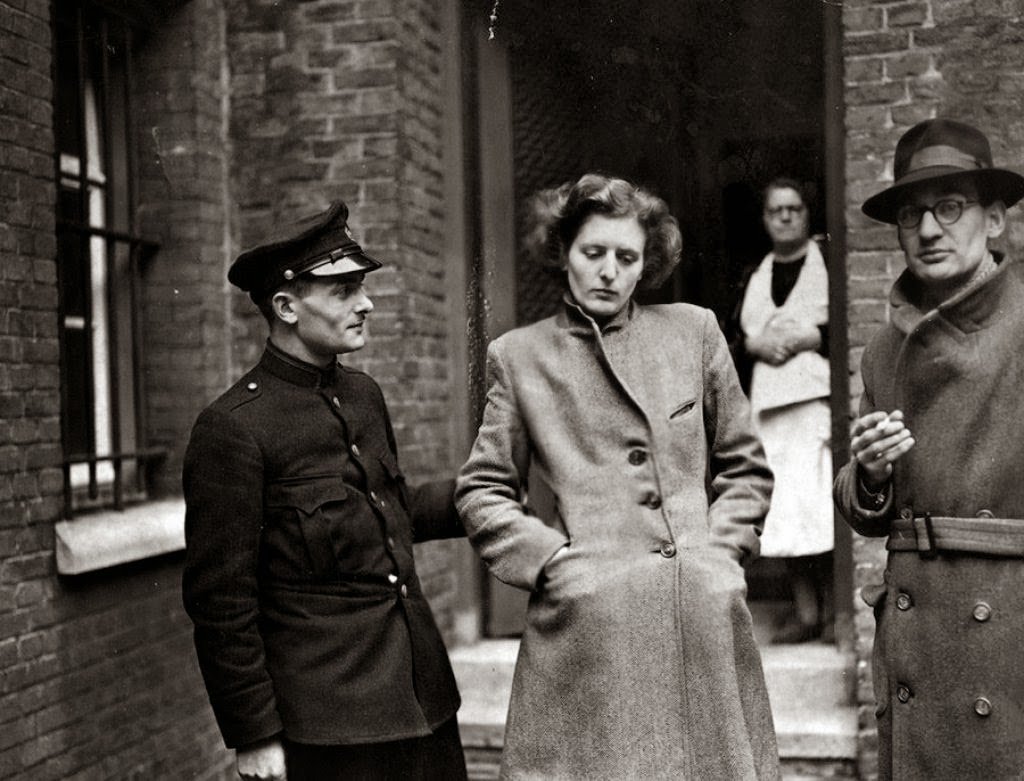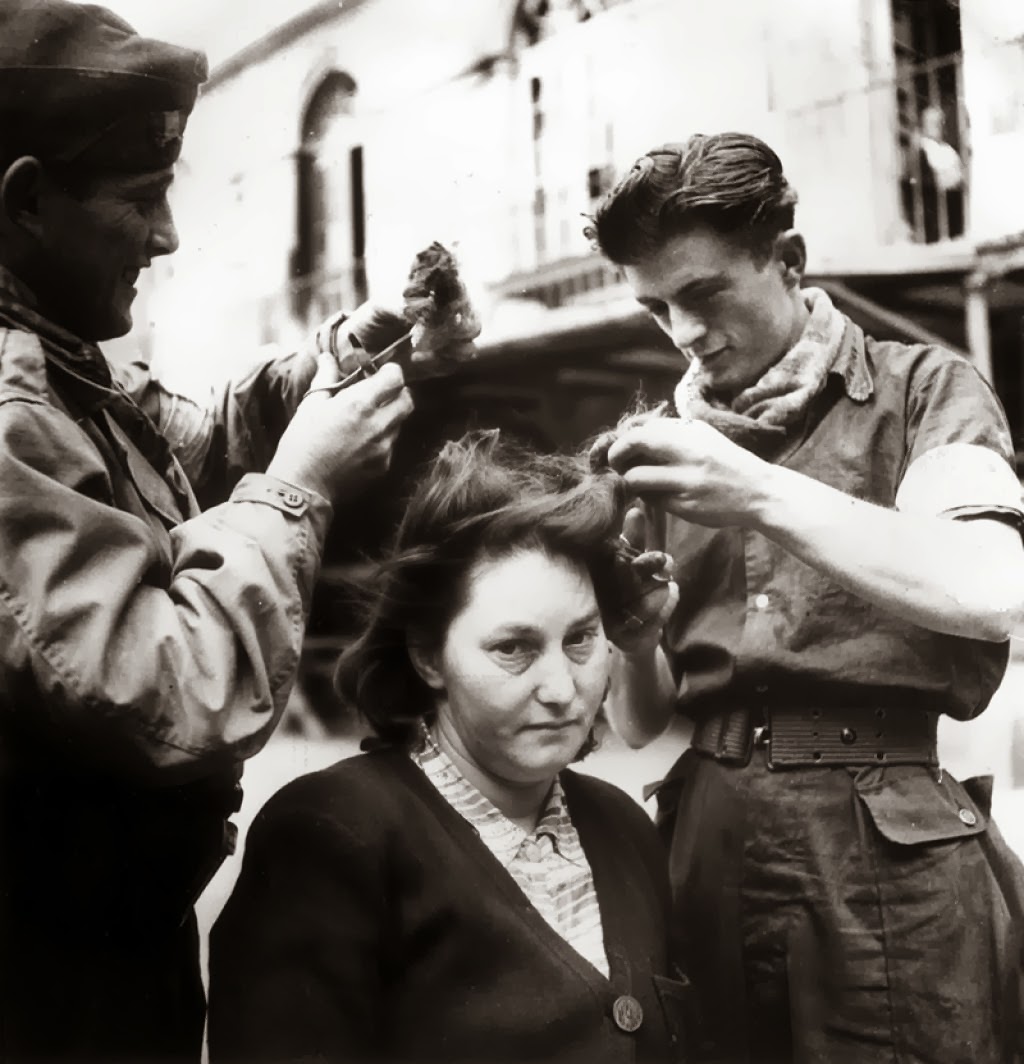The woman photographed here, believed to have been a prostitute who serviced German occupiers, is having her head shaved by French civilians to publicly mark her. This picture was taken in Montelimar, France, on August 29, 1944. At the end of World War II, many French people accused of collaboration with Germany endured a particularly humiliating act of revenge: their heads were shaved in public. Nearly all those punished were women. Most historians have stressed the sexual anxiety created by the Nazi Occupation and how women’s sexual activity was judged as part of a public “cleansing” after liberation.
Similar to the vigilante gangs that punished men who collaborated with the occupiers, groups would band together to judge women by parading them in the public square. This episode in French history continues to provoke shame and unease and as a result, has never been the subject of a thorough examination. The punishment of shaving a woman’s head had biblical origins. In Europe, the practice dated back to the dark ages, with the Visigoths. During the middle ages, this mark of shame, denuding a woman of what was supposed to be her most seductive feature, was commonly a punishment for adultery. Shaving women’s heads as a mark of retribution and humiliation was reintroduced in the 20th century. Throughout France, from 1943 to the beginning of 1946, about 20,000 women of all ages and all professions who were accused of having collaborated with the occupying Germans had their heads shaved. Just as the identity of those who carried this task out varied so too did the form it took. For example, among those who carried it out can be found members of the Resistance, those who took part in fighting at the time of the Liberation, neighbors who came down into the street once the Germans had left and men whose authority depended on the police and the courts. After the humiliation of a public head-shaving, the tondues – the shorn women – were often paraded through the streets on the back of a lorry, occasionally to the sound of a drum as if it were a tumbril and France was reliving the revolution of 1789. Some were daubed with tar, some stripped half-naked, some marked with swastikas in paint or lipstick. In Bayeux, Churchill’s private secretary Jock Colville recorded his reactions to one such scene. “I watched an open lorry drive past, to the accompaniment of boos and catcalls from the French populace, with a dozen miserable women in the back, every hair on their heads shaved off. They were in tears, hanging their heads in shame. While disgusted by this cruelty, I reflected that we British had known no invasion or occupation for some 900 years. So we were not the best judges”. The American historian Forrest Pogue wrote of the victims that “their look, in the hands of their tormentors, was that of a hunted animal”. Colonel Harry D McHugh, the commander of an American infantry regiment near Argentan, reported: “The French were rounding up collaborators, cutting their hair off and burning it in huge piles, which one could smell miles away. Also, women collaborators were forced to run the gauntlet and were really beaten”. The imposition of punishment with distinct sexist overtone, characterized by branding or marking, has overshadowed its use for all acts of collaboration. After the war up to the present, photographs of the women with shaven heads have become the only evidence of practice about which those who carried it out have remained silent – attention has been directed at the victims and at the act itself, leaving both what preceded and followed it (collaboration, accusation, arrest, judgment, condemnation) neglected. Lee Miller, one of the photographers who documented the event, talks of the ease with which this shift could take place: “I saw four girls who had been led through the streets and I rushed toward them to take a photograph. At once I found myself at the front of the procession and the local people thought I was the female soldier who had captured them or something like that, and I was kissed and congratulated at the same time as slaps and spits rained down on the unfortunate girls”. Of the collaborative acts of which women were accused, three categories can be defined: political, where they had belonged to a collaborationist organization or, more modestly, had held opinions in favor of the enemy or shown opposition to the Resistance and allied forces; financial if they had benefited from professional or business contacts; personal, if they had relationships with members of the occupying forces. They could also be accused of someone to the occupying authorities. A fourth reason for being arrested and for having one’s head shaved was to be someone from one of the Axis countries; this did not necessarily indicate collaboration but it invited suspicion. In total, there were approximately 23,500 people who had their heads shaved as a punishment for being collaborations. (Photo credit: US Army Archives / French National Archives). Notify me of new posts by email.
Δ Subscribe







